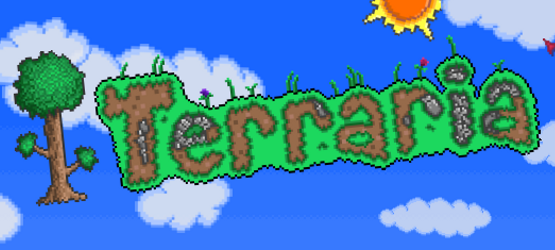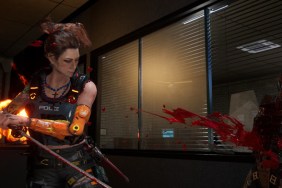At first glance, it’s easy to label Terraria as a Minecraft copycat. After all, if it plays like it, sounds like it and feels a little aimless at times, it must be the same game, only 2d. In Terraria‘s case, though, while its similarities to Mojang’s juggernaut are undeniable, there’s just as many features that help set it apart from its inspiration and from just about anything else out on Playstation Network, if you can manage to force your way past some of its issues.
It all starts out extremely simple. You’re dropped into a randomly generated world right away, after creating your custom character. There’s no particular goal drilled into you right away. But then, surely enough, night starts creeping in and you are forced to seek shelter from all kinds of monsters.
Once that’s taken care of, you might want to build a decent house in order to attract more people to your world. And then, perhaps you’ll be interested in exploring the depths and heights of your world, in search of precious materials, but darn it, you found a way into Hell after digging too much. And look, there are boss monsters looking to kill you. No problem, it’s just a matter of curing leather and making yourself some armor, right?
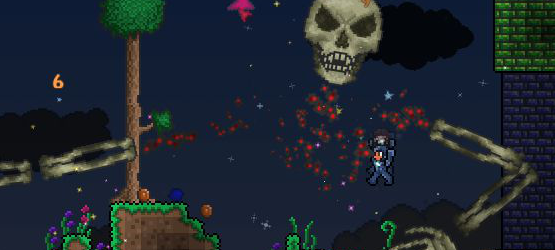
I could keep going, but you get the idea – that’s how Terraria sucks you in. It’s innocent in its approach and absolutely devious once it has your attention. It consumes your free time and asks for seconds and thirds. While that might sound a lot like an MMO, Terraria‘s simplicity and overall lack of an obvious end goal manages to be a much more enjoyable premise in the long run. The world you start spelunking in and building your home is directly influenced by your actions and unlike a game like World of WarCraft, where you are a nameless unit doing the same thing other players around you are plowing away at.
Terraria‘s charm lies in that deceptively apparent simplicity – digging, cutting, mining and building work pretty much the same way, by using the correct tool for the right job. For instance, gathering ore is as simple as hitting a rock with your pickaxe and with those rocks, you can build the outside wall for your house, and so on.
The further you get into the game, non playable characters move in into your world, as well as new threats. The NPCs are a needy bunch and demand that certain requirements are met before settling in. In the magic vendor’s case, a specific stat to be high enough before he makes his way in, or in the blacksmith’s, the construction and use of a firearm. Basically, the stronger and more developed you get, Terraria manages to throw new things your way for you to play with and strive for.
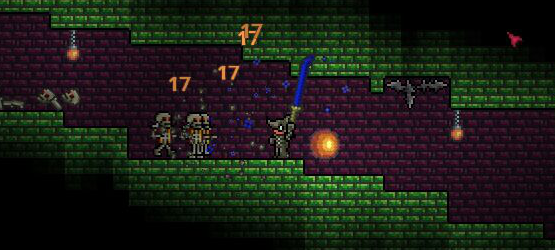
You might want to invite actual humans into your game too, so you can cause mayhem or create marvels together. Unlike the PC version of Terraria, which required you to fiddle with server settings and addresses, having to manually recruit people into your world, this new console port lets you do that without much hassle, by simply having you start an online version of your world right away. Random players can join in or you can make it invite only, if you so choose.
As a game that’s natively played on a mouse and keyboard, Terraria works relatively well on a PS3 controller. You’re given the option of emulating a mouse cursor with a click of the right analog stick, which I thoroughly recommend switching to right away, due to how awful the default lock-on cursor is.
Terraria was never a gorgeous looking game to begin with, sporting ’16 bit’-ish colorful graphics, tucked into horribly obtuse interface on the PC. This console port looks about the same, and the interface issues are still ever present, unfortunately. The worst issue is with crafting and inventory management. It all quickly turns into a chore the more items you pick up and build. Icons look bland and your management options are needlessly complicated, right down to assigning items to the quick slots on the directional pad.
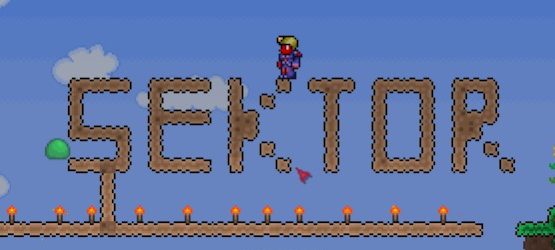
Placing things on the world is also a pain in most cases, due to how easily the graphics blend together, blocking what you’d assume are accessible spots on the grid. Even though you are able to place your cursor at an exact spot, there are times when the game just refuses to work.
This is one of those ‘build your own fun’ downloadables you could easily spend hundreds of hours exploring and still discover new things to mess around with. Or you could drop it five minutes into it. It’ll depend on how dedicated you are and are willing to deal with in order to enjoy Terraria. There’s a gem to be found in this game, but boy is it tucked in deep.
-
Tons to do, once you get into it
-
Deceptively simple; incredibly freeform
-
Easier to play online than before
-
It will take you a while to get into it
-
Extremely obtuse interface and presentation
-
A little expensive in comparison to other versions
